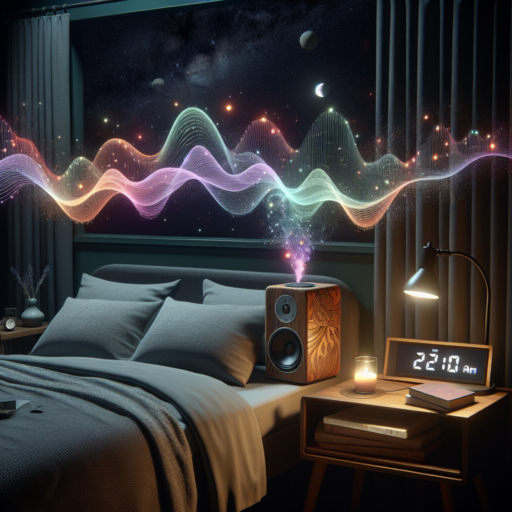What is the best Hz frequency for sleep?
Finding the optimal Hz frequency for sleep can be a transformative discovery for those struggling to find restorative rest. The human brain is responsive to various frequencies, with certain ranges more conducive to relaxation and sleep. Among the spectrum of sounds, the delta frequency range, typically between 0.5 to 4 Hz, has been widely recognized for its sleep-inducing properties.
It is crucial to note that the effectiveness of Hz frequencies can vary significantly from person to person. However, delta waves are universally acknowledged for their role in promoting deep sleep stages, which are critical for physical and mental recovery. Listening to sounds or music tuned to the lower end of the delta range can help synchronize the brain’s activity with these sleep-friendly waves, potentially making it easier to drift off to sleep.
Moreover, the exploration of Hz frequencies for sleep does not end with delta waves. For some individuals, frequencies slightly higher than 4 Hz, but still within the theta range (4 to 8 Hz), might also support relaxation and the transition into sleep. These frequencies are often associated with meditation and reduced mental chatter, further aiding the process of falling asleep.
Does 432 Hz music help sleep?
Many people swear by the soothing power of 432 Hz music when it comes to improving sleep quality. Unlike the standard tuning frequency of 440 Hz used in most music, 432 Hz is claimed to be more harmonically aligned with the universe and the natural world, potentially making it more relaxing. This distinctive frequency is believed to resonate with the body’s natural vibrations, promoting a deeper sense of peace and well-being.
The purported benefits of listening to music tuned to 432 Hz before bed include a reduction in anxiety and stress, two common culprits that interfere with sleep. Reducing these levels can significantly improve the ease with which people fall asleep and the quality of sleep they experience. Anecdotal evidence suggests that individuals who incorporate 432 Hz music into their nighttime routine often report a smoother transition to sleep, experiencing fewer disruptions throughout the night.
Scientific Perspectives on 432 Hz Music and Sleep
While empirical research specifically investigating the sleep-promoting effects of 432 Hz music is limited, several studies have highlighted the general benefits of music for sleep. Music’s ability to lower heart rate, blood pressure, and cortisol levels creates a conducive environment for rest. What makes 432 Hz music uniquely effective, as proponents argue, is its supposed harmonic alignment with the body and nature, fostering an even more profound state of relaxation.
No se han encontrado productos.
Does listening to frequencies while sleeping work?
The debate over whether listening to frequencies during sleep can genuinely enhance the quality of rest, facilitate learning, or even promote healing has intrigued both researchers and the general public for years. Proponents argue that certain frequencies, when played at the right volume and duration, can align with the brain’s natural rhythms, leading to various beneficial outcomes.
Understanding Brainwave Frequencies
Our brains are constantly producing waves that vary in frequency depending on our state of consciousness. Delta waves, for instance, predominate during deep sleep, while theta waves are associated with lighter stages of sleep and relaxation. Listening to audio recordings that mimic these frequencies might encourage the brain to align with these states, thereby potentially enhancing the quality of sleep or even inducing a meditative state.
The Potential Benefits
- Enhanced Sleep Quality: There is evidence to suggest that listening to low-frequency sounds can improve the depth and quality of sleep, helping listeners to wake up feeling more rested.
- Stress Reduction: Frequencies that mimic theta waves may promote relaxation, reducing stress and anxiety levels, and making it easier to fall asleep.
- Improved Focus and Memory: Some studies indicate that certain frequencies can enhance cognitive functions, including memory and focus, by potentially fostering a better sleep environment.
While the science behind listening to frequencies while sleeping is still evolving, anecdotal reports and some preliminary studies lend credibility to the idea. However, individual experiences can vary widely, and what works for one person might not work for another. Experimenting with different types of frequencies and noting their effects on your own sleep quality and mental state could be a way to see if this practice benefits you personally.
What is 528 Hz frequency good for?
The 528 Hz frequency is often heralded as the ‘Love Frequency.’ It’s believed to have remarkable healing and restoring capabilities, particularly for the human body and mind. According to various studies and anecdotal evidence, this particular frequency can offer a plethora of benefits that help promote overall well-being and mental clarity.
Reducing Stress and Anxiety
One of the key advantages of the 528 Hz frequency is its potential to significantly reduce stress and anxiety levels. Listening to music tuned to this frequency has been reported to induce a state of calm, making it easier for individuals to relax and unwind. The soothing nature of these vibrations is thought to interact with our biofield, the energy field that surrounds and permeates our bodies, harmonizing our emotional states.
Promoting Healing and Recovery
Another significant benefit attributed to the 528 Hz frequency is its role in promoting healing and recovery. There is evidence to suggest that this sound frequency can assist in repairing DNA, thereby enhancing the body’s natural healing processes. Whether it’s speeding up physical recovery, improving sleep quality, or boosting the immune system, the healing effects of 528 Hz are wide-ranging. This makes it a popular choice for therapeutic and medicinal audio applications.
Listening experiences tailored to the 528 Hz frequency encompass not only music but also various forms of sound therapy, including binaural beats and Solfeggio frequencies. By integrating these sounds into daily routines, individuals may unlock an array of health benefits, setting the stage for enhanced physical, emotional, and mental well-being.




